Rosy Boa - Lichanura orcutti
Stejneger, 1889(aka Northern Three-lined Boa)
(Comprised of 2 former subspecies of the species Lichanura trivirgata:
Coastal Rosy Boa - Lichanura trivirgata roseofusca and Desert Rosy Boa - Lichanura trivirgata gracia)
Description • Taxonomy • Species Description • Scientific Name • Alt. Names • Similar Herps • References • Conservation Status
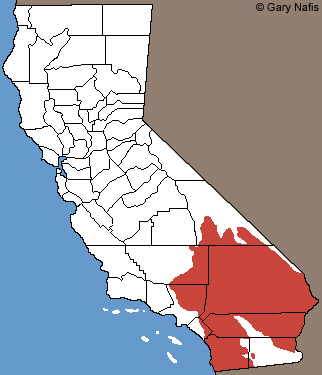
| All of the Rosy Boas shown below are the same species, Lichanura orcutti. They are grouped together in a way that corresponds to the long-accepted older taxonomy that is still favored by many Rosy Boa enthusiasts. |
|||||||||||||||||||||||||||||||||||||||||||||||||||
The Rosy Boas below from southwest California were previously classified as Lichanura trivirgata roseofusca - Coastal Rosy Boa |
|||||||||||||||||||||||||||||||||||||||||||||||||||
 |
|||||||||||||||||||||||||||||||||||||||||||||||||||
| Juvenile, Santa Ana Mountains, Riverside County © Nick Barrientos | |||||||||||||||||||||||||||||||||||||||||||||||||||
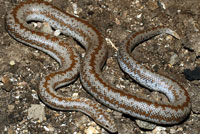 |
 |
 |
 |
||||||||||||||||||||||||||||||||||||||||||||||||
| Adult, San Diego County desert | Adult, San Diego County desert | ||||||||||||||||||||||||||||||||||||||||||||||||||
 |
 |
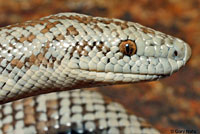 |
|||||||||||||||||||||||||||||||||||||||||||||||||
| Juvenile, Imperial County desert | Adult, San Diego County desert | Adult, Riverside County © Brian Hinds | |||||||||||||||||||||||||||||||||||||||||||||||||
 |
 |
 |
 |
||||||||||||||||||||||||||||||||||||||||||||||||
| Adult, Imperial County desert | Juvenile, Imperial County desert | Adult, San Diego County desert | Adult, San Diego County desert | ||||||||||||||||||||||||||||||||||||||||||||||||
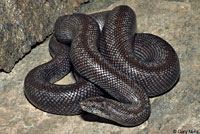 |
 |
 |
 |
||||||||||||||||||||||||||||||||||||||||||||||||
| Adult female, coastal San Diego County | |||||||||||||||||||||||||||||||||||||||||||||||||||
 |
 |
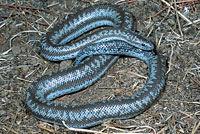 |
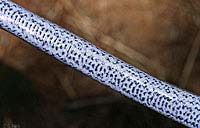 |
||||||||||||||||||||||||||||||||||||||||||||||||
| Juvenile male, coastal San Diego County | Adult, Imperial County desert (Specimen courtesy of Tim Burkhardt) |
||||||||||||||||||||||||||||||||||||||||||||||||||
 |
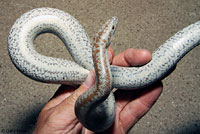 |
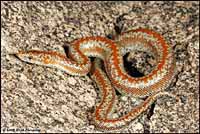 |
 |
||||||||||||||||||||||||||||||||||||||||||||||||
| Adult, Imperial County desert | Adult, Riverside County © Brad Alexander |
Juvenile, San Diego County © Bruce Edley |
|||||||||||||||||||||||||||||||||||||||||||||||||
 |
 |
 |
 |
||||||||||||||||||||||||||||||||||||||||||||||||
| Adult, San Diego County, rolled up in a defensive ball. © Sean Kelly | Adult, Riverside County © Brian Hinds | Juvenile, San Gabriel Mountains, Los Angeles County © Ross Padilla | |||||||||||||||||||||||||||||||||||||||||||||||||
 |
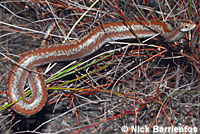 |
 |
 |
||||||||||||||||||||||||||||||||||||||||||||||||
| Adult in habitat, Riverside County © Brad Alexander |
Adult, Santa Ana Mountains, Riverside County © Nick Barrientos | Juvenile, Santa Ana Mountains, Riverside County © Nick Barrientos | Juvenile, Santa Ana Mountains, Riverside County © Nick Barrientos | ||||||||||||||||||||||||||||||||||||||||||||||||
 |
 |
 |
 |
||||||||||||||||||||||||||||||||||||||||||||||||
| Adult, San Diego County © Douglas Brown |
Adult, Riverside County © Brody Trent |
Adult, San Diego County © Paul Maier |
Adult, Riverside County © Emile Bado |
||||||||||||||||||||||||||||||||||||||||||||||||
 |
 |
 |
 |
||||||||||||||||||||||||||||||||||||||||||||||||
| Adult female, coastal Riverside County © Grigory Heaton |
Adult male in habitat, coastal Riverside County © Grigory Heaton | Adult, Riverside County © Zeev Nitzan Ginsburg |
Juvenile, Riverside County © Zeev Nitzan Ginsburg |
||||||||||||||||||||||||||||||||||||||||||||||||
 |
 |
 |
 |
||||||||||||||||||||||||||||||||||||||||||||||||
| This adult boa was discovered constricting a kangaroo rat at night on a trail in San Diego County. © Drew Arnett | Adult, coastal San Diego County © Eleanor Breslin. This individual appears to be melanistic, lacking all pigment except black. |
Adult in rock crack, Riverside County © Zeev Nitzan Ginsburg |
|||||||||||||||||||||||||||||||||||||||||||||||||
The Rosy Boas below from Southern San Diego County were previously classified as Lichanura trivirgata roseofusca - Coastal Rosy Boa. They were also known as "Unicolor" Boas |
|||||||||||||||||||||||||||||||||||||||||||||||||||
These snakes were also classified as Lichanura trivirgata, Rosy Boa, following the findings of a study published in 2007, but those findings were changed later, following more accurate DNA tests. |
|||||||||||||||||||||||||||||||||||||||||||||||||||
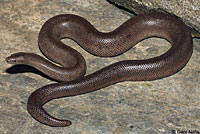 |
 |
 |
 |
||||||||||||||||||||||||||||||||||||||||||||||||
| Adult male, coastal San Diego County | Adult male, coastal San Diego County | ||||||||||||||||||||||||||||||||||||||||||||||||||
 |
 |
 |
|||||||||||||||||||||||||||||||||||||||||||||||||
| Unstriped "unicolor" Adult, coastal San Diego County (Specimen courtesy of Tim Burkhardt) |
Unstriped "unicolor" Adult, coastal San Diego County. | Unicolor adult, San Diego County © Brian Hinds |
|||||||||||||||||||||||||||||||||||||||||||||||||
 |
|||||||||||||||||||||||||||||||||||||||||||||||||||
| Unicolor adult, San Diego County © Brian Hinds |
|||||||||||||||||||||||||||||||||||||||||||||||||||
The Rosy Boas below from Mohave Desert locations were previously classified as Lichanura trivirgata gracia - Desert Rosy Boa |
|||||||||||||||||||||||||||||||||||||||||||||||||||
 |
 |
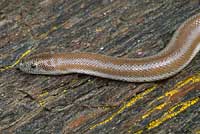 |
|||||||||||||||||||||||||||||||||||||||||||||||||
| Adult, Imperial County | Adult, Kern County (Specimen courtesy of Robert Hansen) | ||||||||||||||||||||||||||||||||||||||||||||||||||
 |
 |
 |
 |
||||||||||||||||||||||||||||||||||||||||||||||||
| Adult female, Imperial County desert (Specimen courtesy of Stuart Young) | Adult, Inyo County (Specimen courtesy of Tim Burkhardt) | ||||||||||||||||||||||||||||||||||||||||||||||||||
 |
 |
 |
 |
||||||||||||||||||||||||||||||||||||||||||||||||
| Adult male, Imperial County desert | Adult from San Bernardino County © Mike Clarkson |
||||||||||||||||||||||||||||||||||||||||||||||||||
 |
 |
 |
 |
||||||||||||||||||||||||||||||||||||||||||||||||
| Adult, Inyo County © Zeev Nitzan Ginsburg | Adult, Inyo County. © Chris Morrison | ||||||||||||||||||||||||||||||||||||||||||||||||||
 |
 |
 |
 |
||||||||||||||||||||||||||||||||||||||||||||||||
| Adult, Riverside County desert (Specimen courtesy of Tim Burkhardt) | Adult, Kern County © Noah Morales | ||||||||||||||||||||||||||||||||||||||||||||||||||
 |
 |
 |
|||||||||||||||||||||||||||||||||||||||||||||||||
| Adult, Kern County desert © Ryan Sikola | Adult, Inyo County © Ryan Sikola | Adult with unusually dark stripes, Inyo County © Zeev Nitzan Ginsburg | |||||||||||||||||||||||||||||||||||||||||||||||||
| "Desert Rosy Boas" From Outside California | |||||||||||||||||||||||||||||||||||||||||||||||||||
 |
 |
 |
|||||||||||||||||||||||||||||||||||||||||||||||||
| Adult, Arizona, locality unknown. (Specimen courtesy of Randy Babb) | |||||||||||||||||||||||||||||||||||||||||||||||||||
The Rosy Boas below from the contact zone were previously classified as intergrades of the two previously-recognized subspecies: Lichanura trivirgata roseofusca - Coastal Rosy Boa and Lichanura trivirgata gracia - Desert Rosy Boa |
|||||||||||||||||||||||||||||||||||||||||||||||||||
 |
|||||||||||||||||||||||||||||||||||||||||||||||||||
| Adult Riverside County desert © Douglas Brown | |||||||||||||||||||||||||||||||||||||||||||||||||||
 |
 |
 |
 |
||||||||||||||||||||||||||||||||||||||||||||||||
| Sub-adult, San Bernardino County desert. Found swimming at the edge of a creek at night. | |||||||||||||||||||||||||||||||||||||||||||||||||||
 |
 |
 |
 |
||||||||||||||||||||||||||||||||||||||||||||||||
| Adult, Riverside County | Adult, San Bernardino County © Stuart Young |
Adult, San Bernardino County © Stuart Young |
|||||||||||||||||||||||||||||||||||||||||||||||||
 |
|||||||||||||||||||||||||||||||||||||||||||||||||||
| Adult Riverside County desert © Douglas Brown |
|||||||||||||||||||||||||||||||||||||||||||||||||||
| Rosy Boa Courtship | |||||||||||||||||||||||||||||||||||||||||||||||||||
 |
 |
 |
|||||||||||||||||||||||||||||||||||||||||||||||||
 |
 |
 |
 |
||||||||||||||||||||||||||||||||||||||||||||||||
| This series of pictures shows two Rosy Boas in Kern County in early June. A male is pursuing a female courting her and attempting to breed with her. The male was first observed pursing the female in a sandy wash, following her and attempting to mate with her many times. They were last seen about 100 yards from where they were first spotted. Another male was spotted several yards away and a third male a few hundred feet away, but neither is shown here. © Daniel Koury | |||||||||||||||||||||||||||||||||||||||||||||||||||
| 2009 Wildfire Rescue Boa | |||||||||||||||||||||||||||||||||||||||||||||||||||
 |
 |
 |
|||||||||||||||||||||||||||||||||||||||||||||||||
| In late September, 2009, Lonnie Fehr found this adult boa in a canyon at the edge of the burn zone of the Station fire in the San Gabriel Mountains in Los Angeles County. The boa remained beside a rock next to a trail, becoming a mascot to passing fire crews who were happy to see an animal that had escaped the fire. When it became apparent that the snake was sick and vulnerable, the snake was taken to a veterinarian. | Dr. Clyde Pitts and staff X-rayed the snake and determined that it was suffering from dehydration and smoke inhalation, and that it had eaten a large gopher that had probably been burned in the fire and was not being digested normally. They administered vitamins and other treatment until the snake was ready to be returned to the wild. The pictures above show the snake after treatment as it was being released. © Lori Paul. | ||||||||||||||||||||||||||||||||||||||||||||||||||
| Rosy Boa Habitat | |||||||||||||||||||||||||||||||||||||||||||||||||||
 |
 |
 |
 |
||||||||||||||||||||||||||||||||||||||||||||||||
| Habitat, San Diego County desert | Habitat, San Diego County desert | Habitat, San Diego County desert |
Habitat, Imperial County desert | ||||||||||||||||||||||||||||||||||||||||||||||||
 |
 |
 |
 |
||||||||||||||||||||||||||||||||||||||||||||||||
| Habitat, Riverside County desert | Habitat, Kern County | Habitat, Riverside County | Habitat, Riverside County | ||||||||||||||||||||||||||||||||||||||||||||||||
 |
 |
 |
 |
||||||||||||||||||||||||||||||||||||||||||||||||
| Habitat, San Gabriel Mountains, Los Angeles County © Ross P. | Habitat, coastal Riverside County © Brian Hinds |
Habitat, San Bernardino County desert | Habitat, San Bernardino County desert | ||||||||||||||||||||||||||||||||||||||||||||||||
 |
 |
 |
 |
||||||||||||||||||||||||||||||||||||||||||||||||
| Habitat, San Bernardino County desert | Habitat, coastal Riverside County | Habitat, Riverside County desert | Habitat, Riverside County desert | ||||||||||||||||||||||||||||||||||||||||||||||||
 |
 |
 |
 |
||||||||||||||||||||||||||||||||||||||||||||||||
| Habitat, Imperial County desert | Habitat, Imperial County desert | San Diego County coastal sage habitat | Habitat, hillside coastal chaparral, San Diego County |
||||||||||||||||||||||||||||||||||||||||||||||||
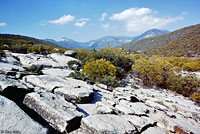 |
 |
 |
 |
||||||||||||||||||||||||||||||||||||||||||||||||
| Habitat, coastal Riverside County | Habitat, Riverside County desert riparian | Habitat, coastal San Diego County | Habitat, coastal San Diego County | ||||||||||||||||||||||||||||||||||||||||||||||||
 |
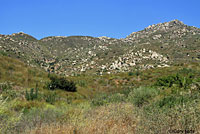 |
 |
 |
||||||||||||||||||||||||||||||||||||||||||||||||
| Habitat, coastal San Diego County | Habitat, coastal San Diego County | Habitat, coastal San Diego County | Habitat, San Diego County desert mountains |
||||||||||||||||||||||||||||||||||||||||||||||||
| Short Videos | |||||||||||||||||||||||||||||||||||||||||||||||||||
 |
 |
 |
|||||||||||||||||||||||||||||||||||||||||||||||||
| A Rosy Boa at night in San Diego County |
A desert phase Rosy Boa crawls at night in Imperial County | A rosy boa discovered at night on a sand bar in the middle of a creek prepares to swim back to the shore. | |||||||||||||||||||||||||||||||||||||||||||||||||
|
|||||||||||||||||||||||||||||||||||||||||||||||||||
|
|||||||||||||||||||||||||||||||||||||||||||||||||||
|
The following conservation status listings for this animal are taken from the January 2024 State of California Special Animals List and the January 2024 Federally Listed Endangered and Threatened Animals of California list (unless indicated otherwise below.) Both lists are produced by multiple agencies every year, and sometimes more than once per year, so the conservation status listing information found below might not be from the most recent lists. To make sure you are seeing the most recent listings, go to this California Department of Fish and Wildlife web page where you can search for and download both lists: https://www.wildlife.ca.gov/Data/CNDDB/Plants-and-Animals. A detailed explanation of the meaning of the status listing symbols can be found at the beginning of the two lists. For quick reference, I have included them on my Special Status Information page. If no status is listed here, the animal is not included on either list. This most likely indicates that there are no serious conservation concerns for the animal. To find out more about an animal's status you can also go to the NatureServe and IUCN websites to check their rankings. This species is listed as Charina trivirgata - rosy boa. Special Animals List Notes: 1) The Forest Service "Sensitive" designation refers only to the subspecies Lichanura trivirgata roseofusca. 2) The taxonomy of this species is in flux. The name Lichanura trivirgata is a synonym. Some sources list several subspecies while others don't recognize any subspecies. |
||
| Organization | Status Listing | Notes |
| NatureServe Global Ranking | G4G5 | Apparently Secure - Secure |
| NatureServe State Ranking | S3S4 | Vulnerable - Apparently Secure |
| U.S. Endangered Species Act (ESA) | None | |
| California Endangered Species Act (CESA) | None | |
| California Department of Fish and Wildlife | None | |
| Bureau of Land Management | None | |
| USDA Forest Service | S | Sensitive |
| IUCN | LC | Least Concern |
|
|
||
Return to the Top
© 2000 -





